Bánh canh sườn, or Vietnamese thick noodle soup with pork ribs, is a broth-based dish featuring thick, chewy noodles in Vietnamese cuisine. This dish usually comes with a light broth, mainly coming from boiling the ribs for a long time.
Allow me to unveil the secret of Bánh canh sườn while also letting you know which tools and ingredients to create the recipe. Furthermore, I will also introduce you to the cooking methods, storage techniques, and a few Vietnamese serving suggestions.
Let’s head to your kitchen and let the cooking begin!
A Quick Guide to Bánh Canh Sườn
Bánh canh sườn is a Vietnamese soup dish featuring thick noodles with pork ribs and many toppings. Commonly, bánh canh refers to the thick noodles alone, which can be made into various bánh canh dishes by employing different toppings like snakehead (bánh canh cá lóc), crab (bánh cua cua), or pork knuckles (bánh canh giò heo).
Typically, the bánh canh (Vietnamese thick noodles) are made of rice flour or tapioca, giving them a chewy texture. Most often, locals will keep the noodles fresh at room temperature and only blanch them in hot water for serving.
In addition, each Vietnamese region has its own way of interpreting bánh canh sườn, either by the seasonings or the noodles’ composition. For example, the Trang Bang region has a bánh canh version made from a special type of rice that can help the noodles last two or three days.
What Tools to Create Bánh Canh Sườn?
Here are the needed utensils for making this dish:
Optional Tools:
The next step is preparing the bánh canh sườn ingredients.
What Ingredients Are Needed for Making Bánh Canh Sườn?
To prepare Vietnamese thick noodle soup with pork ribs, you need the following ingredients:
For Making the Broth:
How to Cook Banh Canh Suon?
To cook bánh canh sườn, all you need is 3 detailed steps below:
Step 1: Prepare the Ingredients
Wash the vegetables and ribs before draining them.
Cut the roots of green onion and coriander to cook with the ribs.
Cut the pork sausages into slices.
Then, place the onion and ginger inside the electric grill for 15 minutes at a temperature of 405F/200C.
For the white radish, cut it in half or into three equal parts. Also, you can slice the straw mushrooms in half so they can soak up the broth while cooking.
Step 2: Process the Ingredients
There are 2 main steps, including blanching and boiling the pork ribs.
Blanching the Ribs
Blanch the ribs in boiling water for 1 – 2 minutes. Then, wash the ribs again to clean them from the smell and scum.
Boiling the Ribs
After washing the blanched ribs, boil them with 0.92 gallons (3.5 liters) of water with white radish, ginger, roots of green onion and coriander, and shallot. Boil the broth and rib at a medium-low temperature for 45 minutes.
Make sure to remove the burned parts on the onion and ginger to avoid giving the broth a burnt flavor. Cut the onions and ginger into halves.
Add onions and ginger to the broth. You also need to skim the foam formed while boiling without covering it with a lid for a clearer broth.
Remove all the vegetable elements from the broth, leaving only the ribs after 45 minutes of boiling. Begin seasoning the broth with:
Adjust the seasonings to your liking.
Transfer the sliced straw mushrooms into the broth with 1 tablespoon of cashew nut oil and cook for another 10 minutes at low heat.
While waiting, blanch the thick noodles in boiling hot water for around 10 – 20 seconds with a teaspoon of oil to prevent the noodles from sticking.
Then, mix water with 1 tablespoon of tapioca flour to incorporate the concoction into the broth. Add the tapioca mixture slowly so you can adjust the consistency to your will.
Also, you need to keep stirring and maintaining a low heat while pouring in the tapioca mixture.
Step 3: Serve Up the Dish
Place the blanched thick noodles at the bottom of the bowl, followed by pork sausage slices and ribs. Then, pour the broth over the assembled ingredients.
Sprinkle the bowl with chopped green onion and coriander with a pinch of pepper before enjoying it alongside a plate of lettuce and bean sprouts.
Enjoy bánh canh sườn with fish sauce, chili, and lime juice for the best experience.
What Secrets Will Elevate Your Bánh Canh Sườn?
To make bánh canh sườn easier to create, try these tips and tricks:
Can You Reheat Bánh Canh Sườn?
Yes, you can reheat leftover bánh canh sườn broth whenever you want to enjoy the recipe. However, reheating an already mixed bowl is not a viable choice since the process can soften the noodles and ruin the original slightly chewy texture.
Additionally, I suggest storing leftover broth in a container with a lid in a refrigerator. It should give you an extra 2 days of storage. By using this broth, you can even make other Vietnamese noodle soups.
Enjoy A Unique Bánh Canh Sườn from Vietnam
It’s time to roll into the kitchen to create a brilliant bowl of bánh canh sườn. I hope you can follow these instructions to materialize a tasty Vietnamese soup right at home. Take your time to follow the cooking methods and learn more cooking tricks when making the dish.
When you’re done cooking, make sure to leave a comment sharing your experience after making a Vietnamese dish. Don’t forget to share this recipe with others so they can discover many tasty Vietnamese recipes.
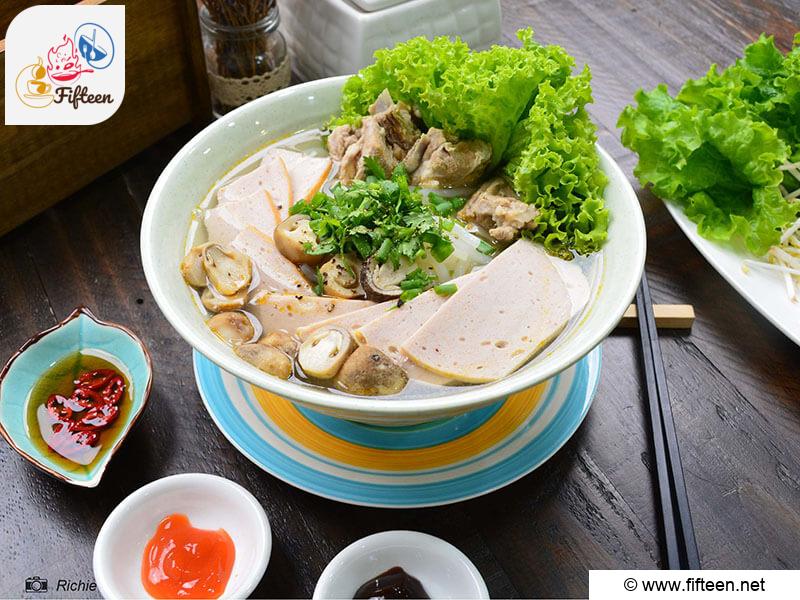
Bánh Canh Sườn Recipe (Vietnamese Thick Noodle Soup With Pork Ribs)
Equipment
- Electric Grill
- Pot
- Ladle
- Knife
- Chopping Board
- Tongs
- Slotted Spoon
Ingredients
Main Ingredients:
- 1.76 lbs of pork ribs
- 1.1 lbs of fresh thick noodles
- 7 ounces of lettuce, bean sprouts, onion, coriander
- 7 ounces of straw mushrooms
- 3.52 ounces of pork sausages
- 3.52 ounces of deep-fried cinnamon-flavored pork sausage
For the Broth:
- 0.92 gallons of fresh water
- 1 medium white radish
- 1 medium onion
- 1 ginger
- Green onion and coriander roots
- 2.5 teaspoons of salt
- 2.5 teaspoons of soup powder
- 1.5 teaspoons of sugar
- 1 tablespoon of cashew nut oil
- 1 tablespoon of tapioca
Instructions
- Clean the vegetables and pork ribs before draining them. Cut the pork sausages into slices. Grill the onion and ginger at 405℉/200℃ for 15 minutes.
- Cut the white radish in half or cut it into three parts. Slice the straw mushrooms in half to cook with the broth later on.
- Blanch the pork ribs in boiling water for 1 – 2 minutes. Then, wash the ribs again with water to clean the excess scum and pork smell.
- Boil the pork ribs with 0.92 gallons of water with white radish, roots of green onion and coriander, shallot, and grilled ginger. Boil the mixture at a medium-low temperature for 45 minutes. Make sure to remove any burned parts on the onion and ginger to prevent infusing a burnt taste into the broth. Cut the grilled onions and gingers into halves.
- Add onions and ginger to the broth. Remember to skim the foam and do not cover the pot completely with a lid to maintain a clear broth.
- Remove the vegetable ingredients leaving only the ribs after boiling for 45 minutes. Continue to season the broth using sugar, soup powder, and salt.
- Continue to transfer the straw mushrooms and cashew oil into the broth to cook for another 10 minutes at a low temperature.
- Blanch the thick noodles in boiling water for around 10 – 20 seconds with a teaspoon of oil. Slowly pour the mixed tapioca flour into the broth to adjust the consistency. Stir and maintain the broth at the lowest heat level, or you can kill off the heat.
- Place blanched noodles in a bowl, topped with pork sausages and ribs, then pour enough broth to cover the noodles. Garnish with green onions and coriander, or accompany with a side of lettuce and bean sprouts. Serve with fish sauce, chili, and lime juice, or opt for chili sauce.
Video
Notes
- The recipe is based on 4 servings.
- You can adjust the seasonings accordingly to create a broth that suits your taste.


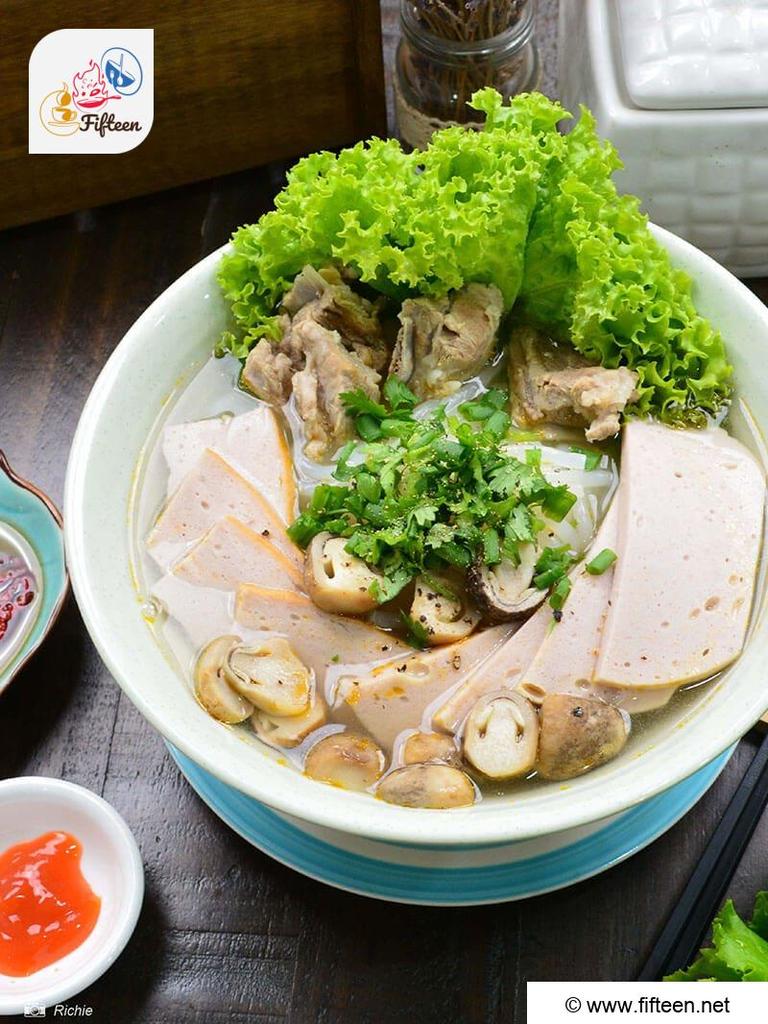
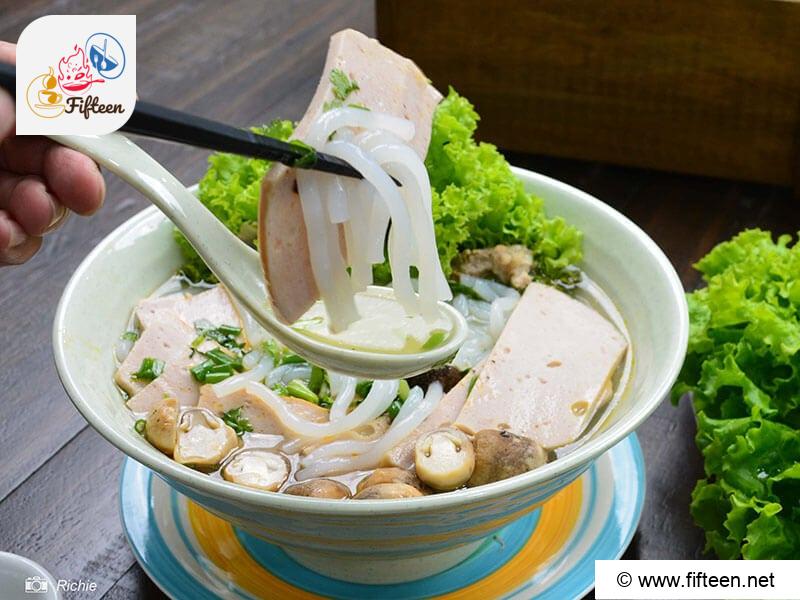
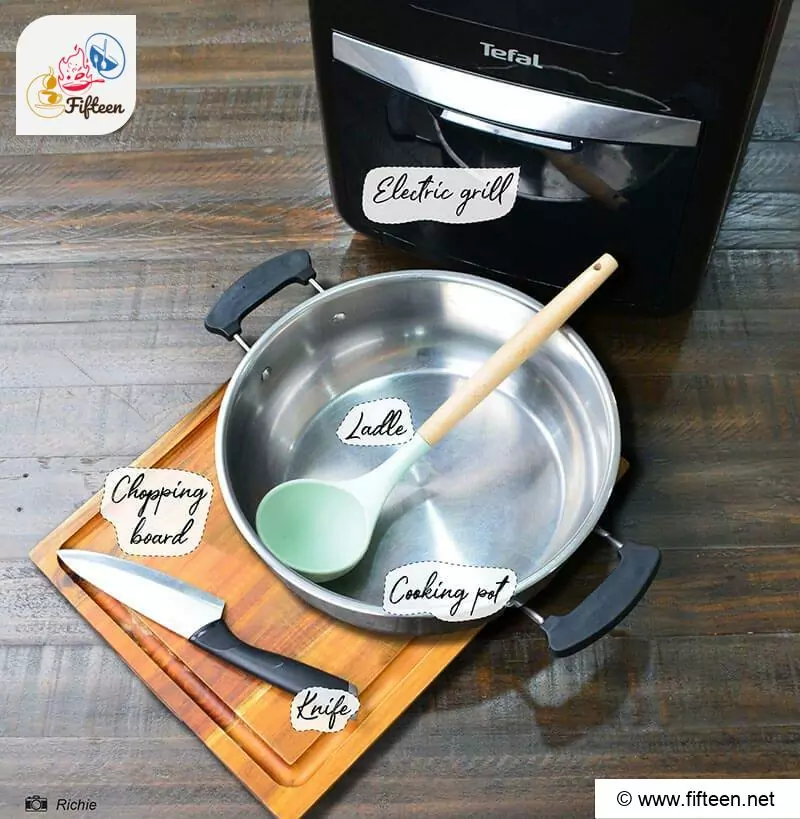
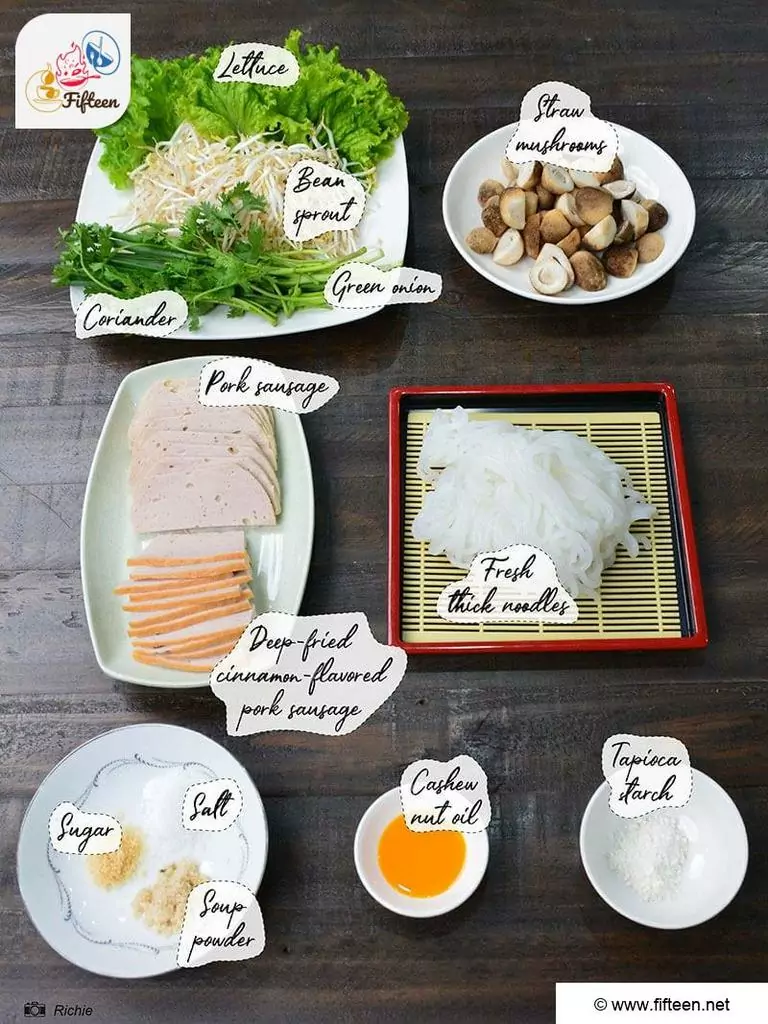
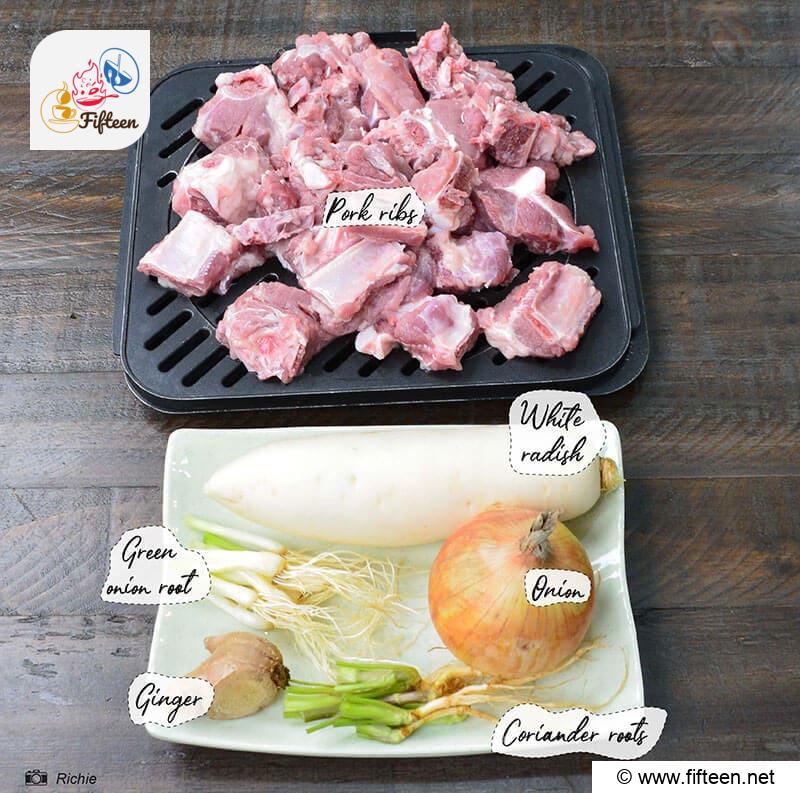
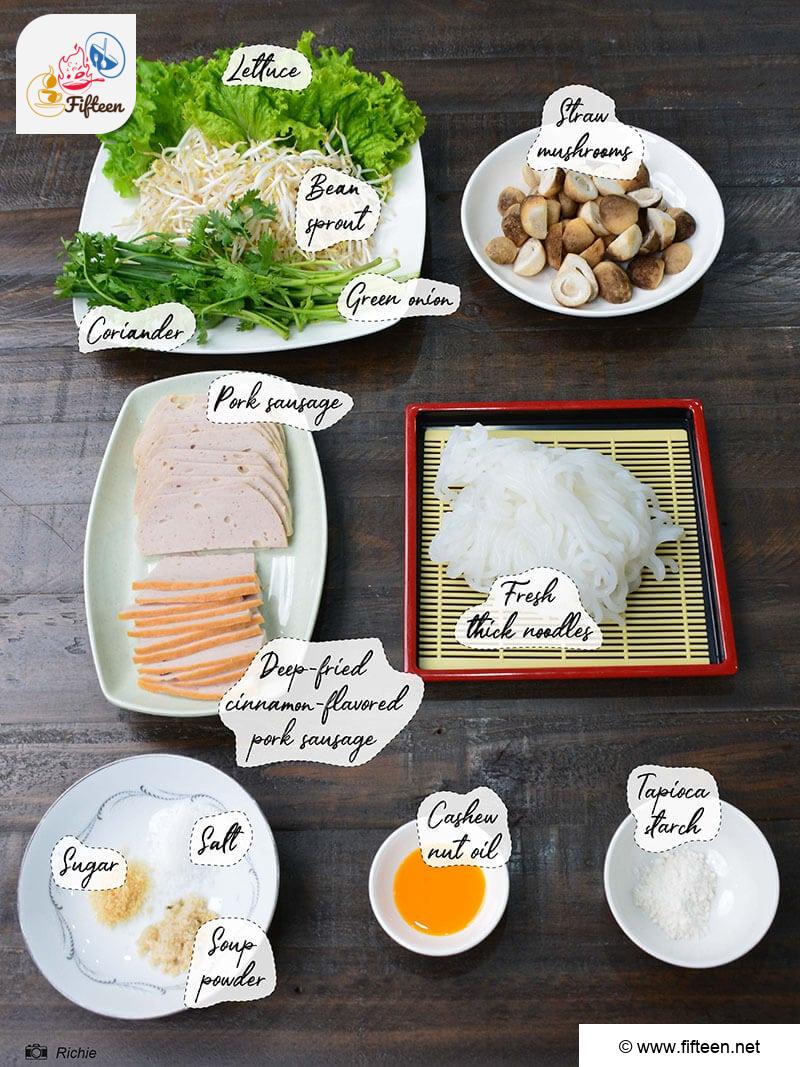
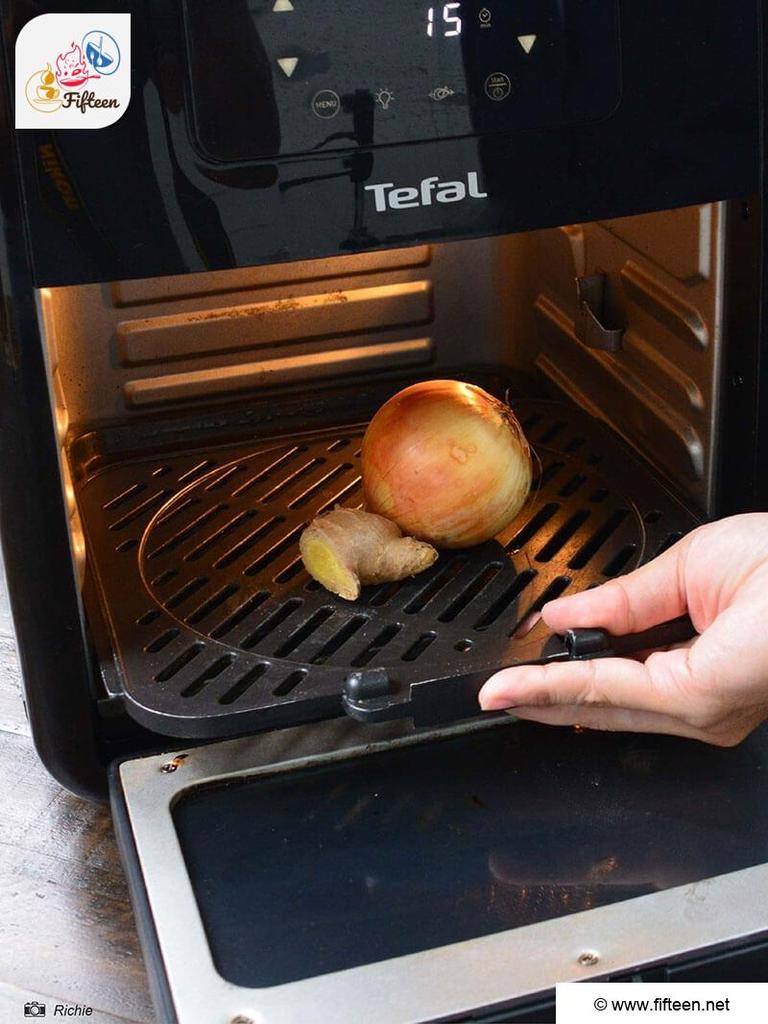
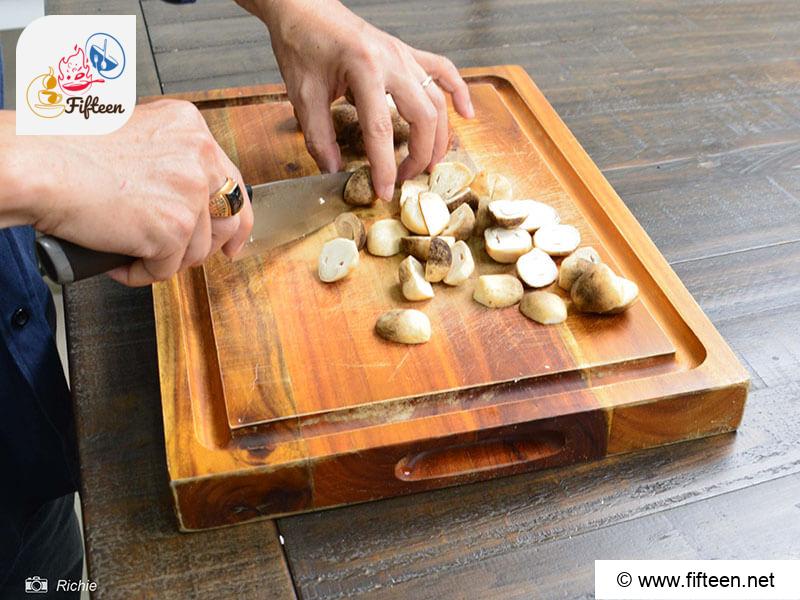
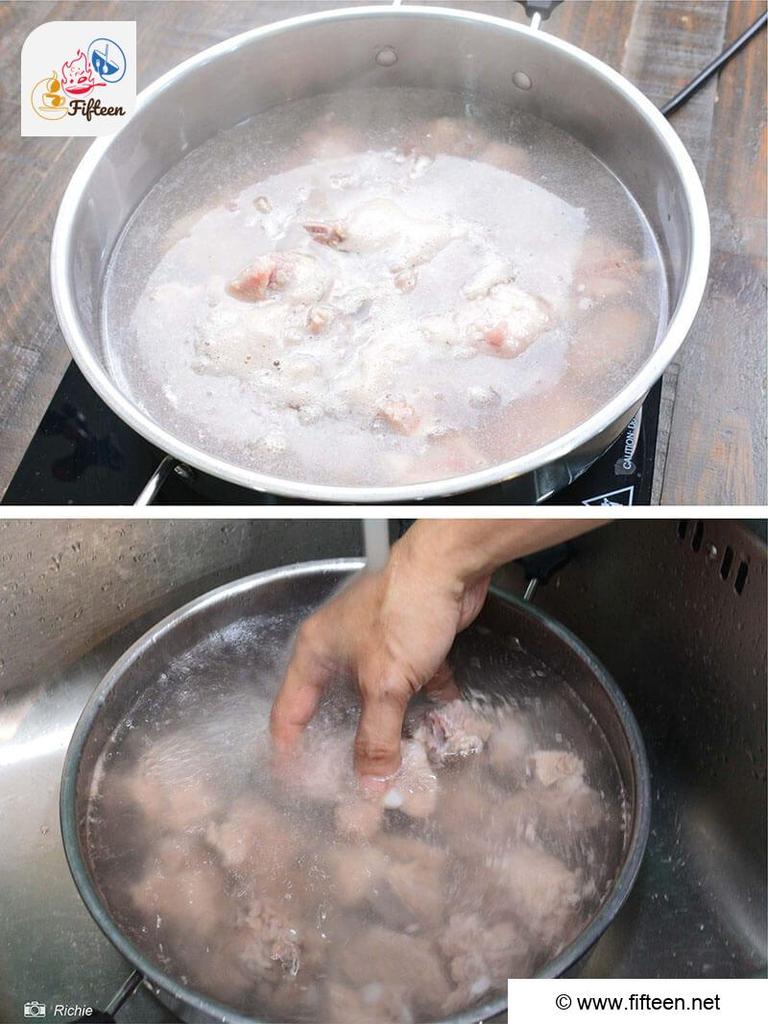
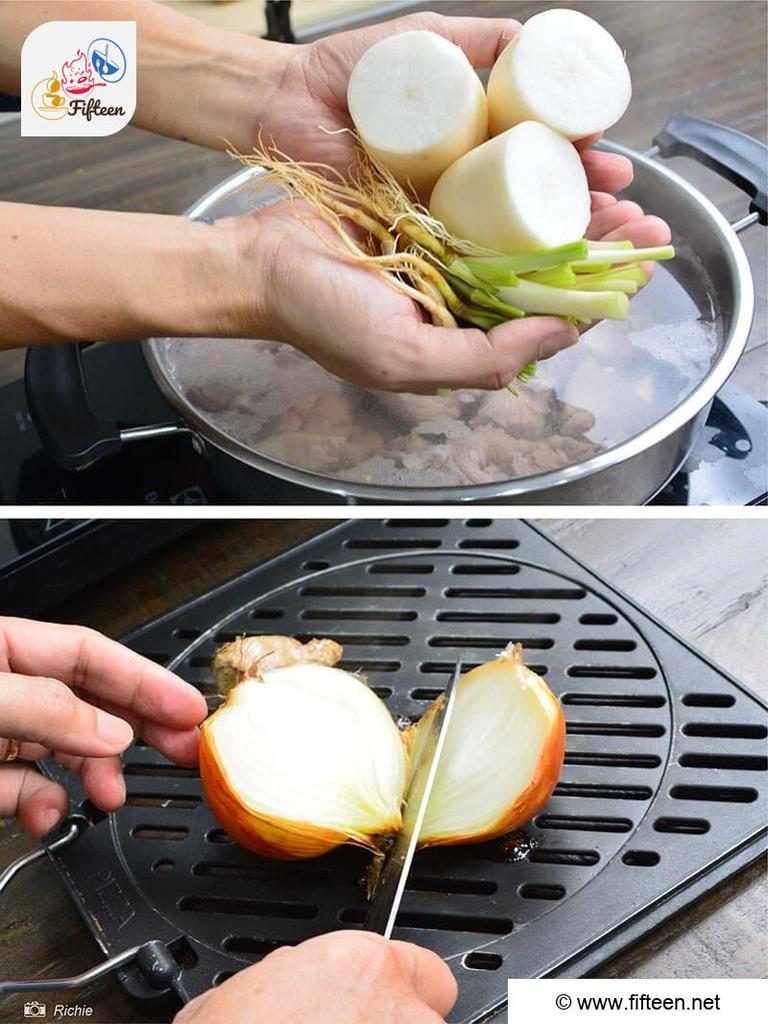
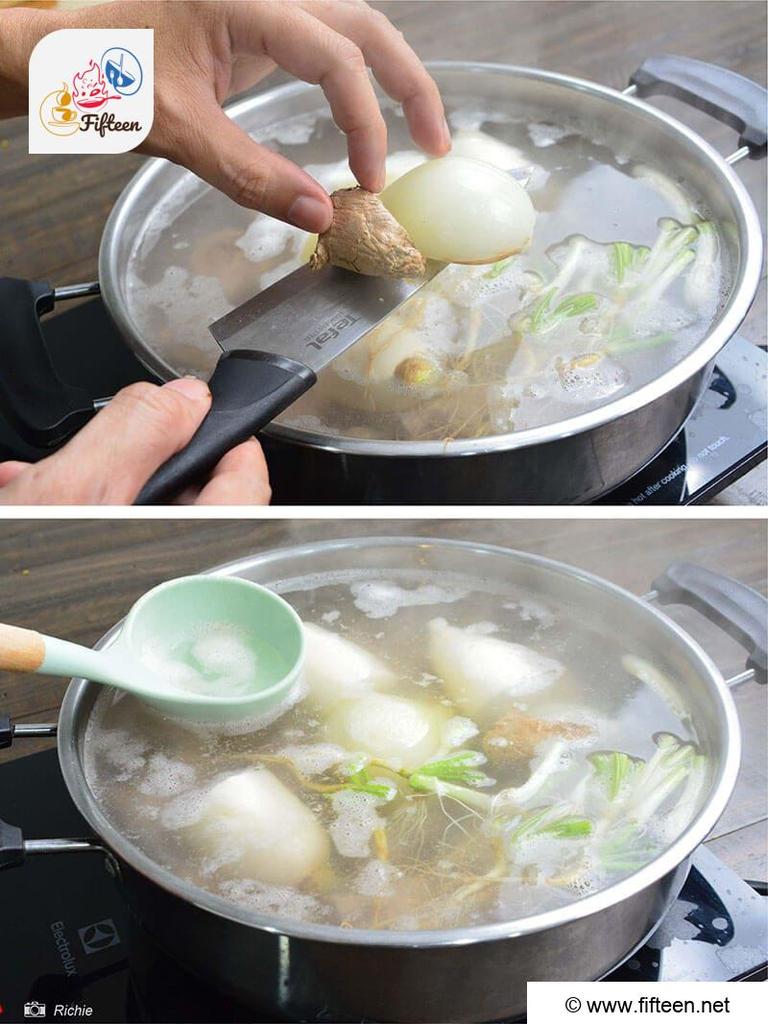
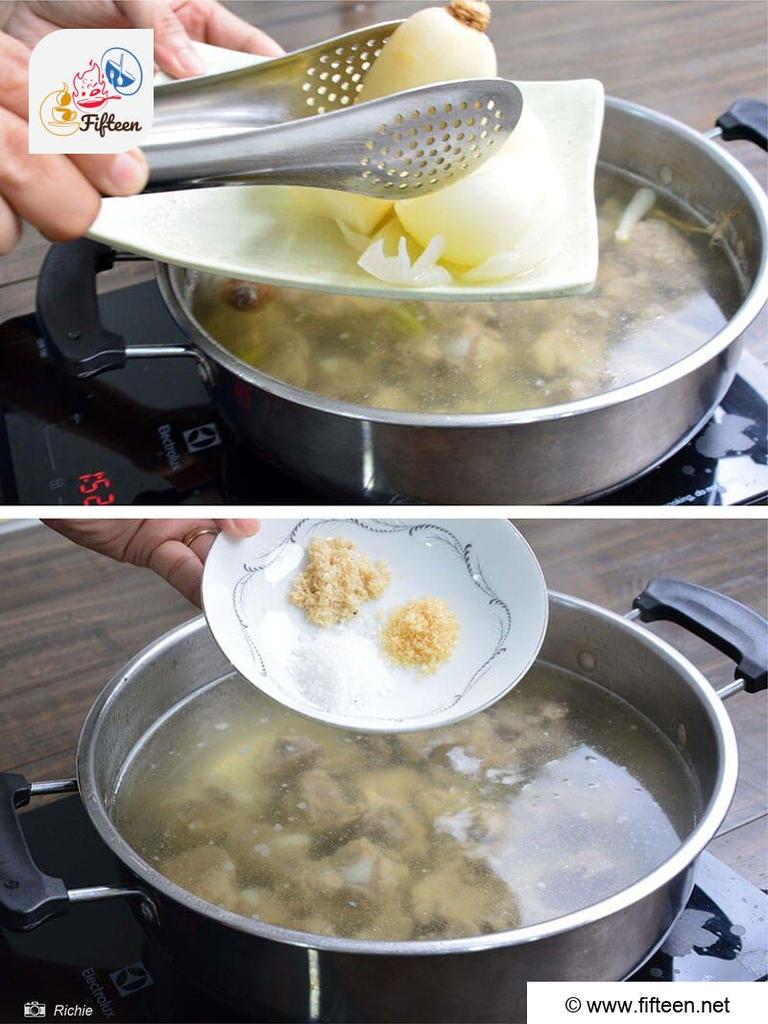
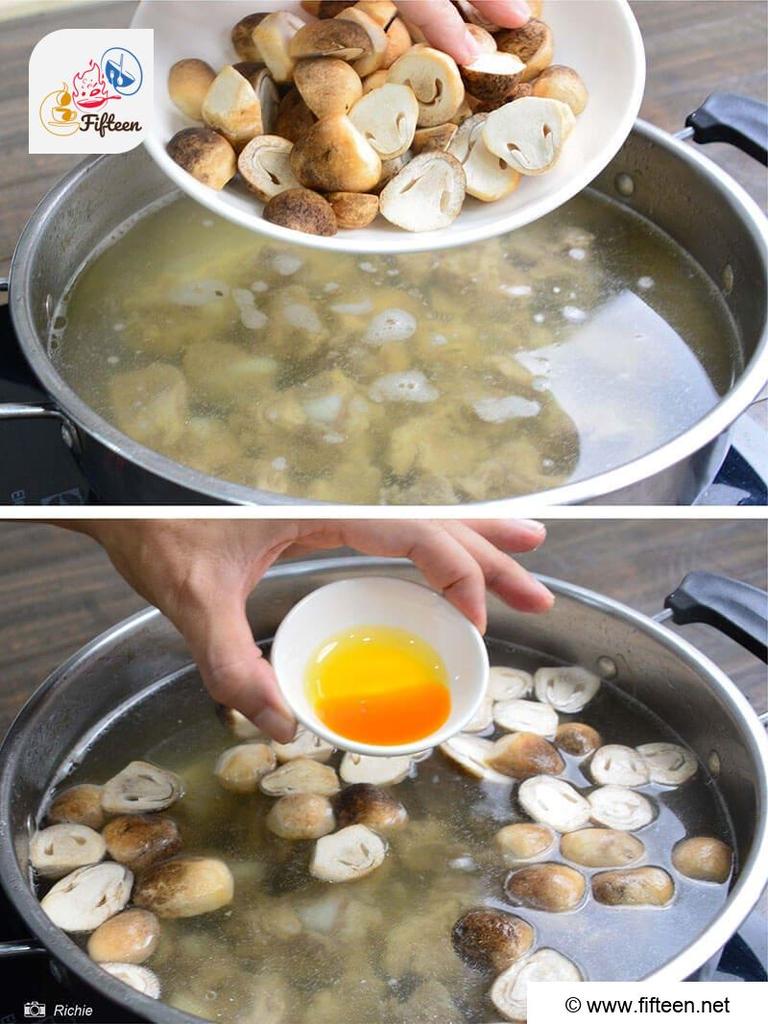
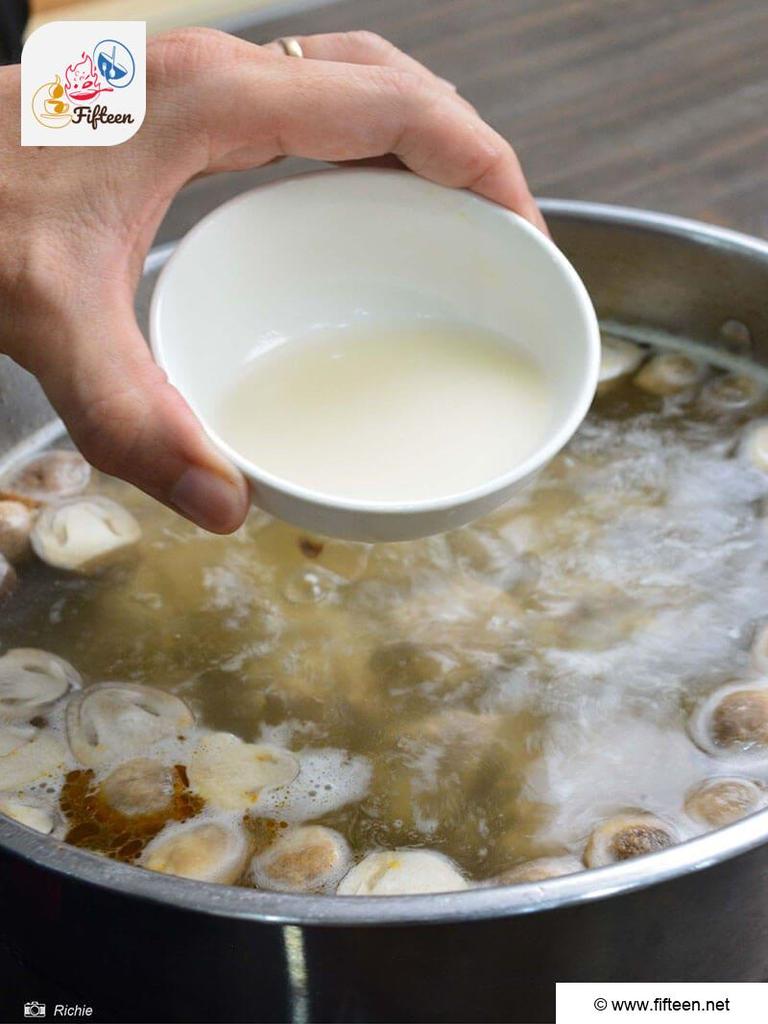
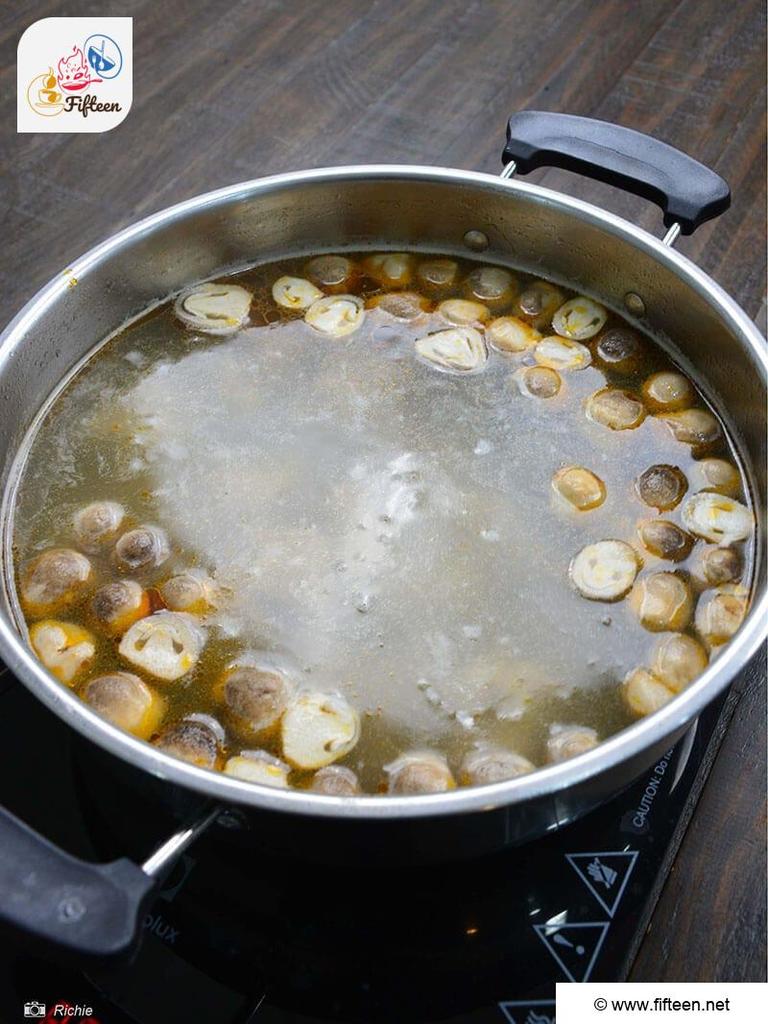
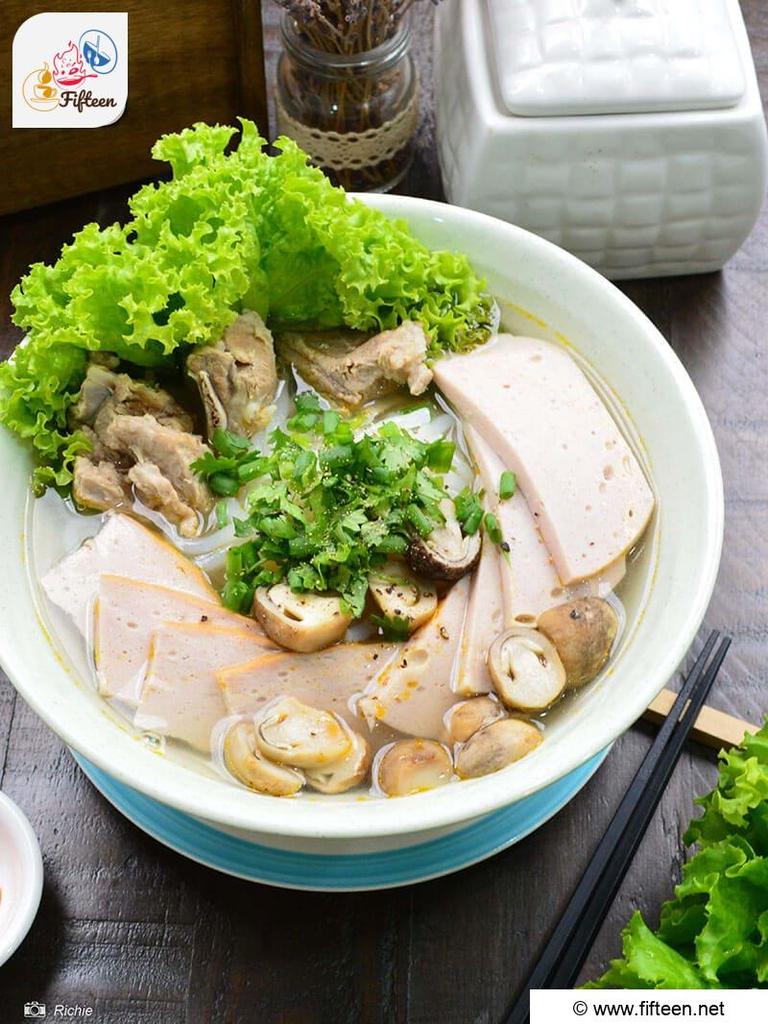
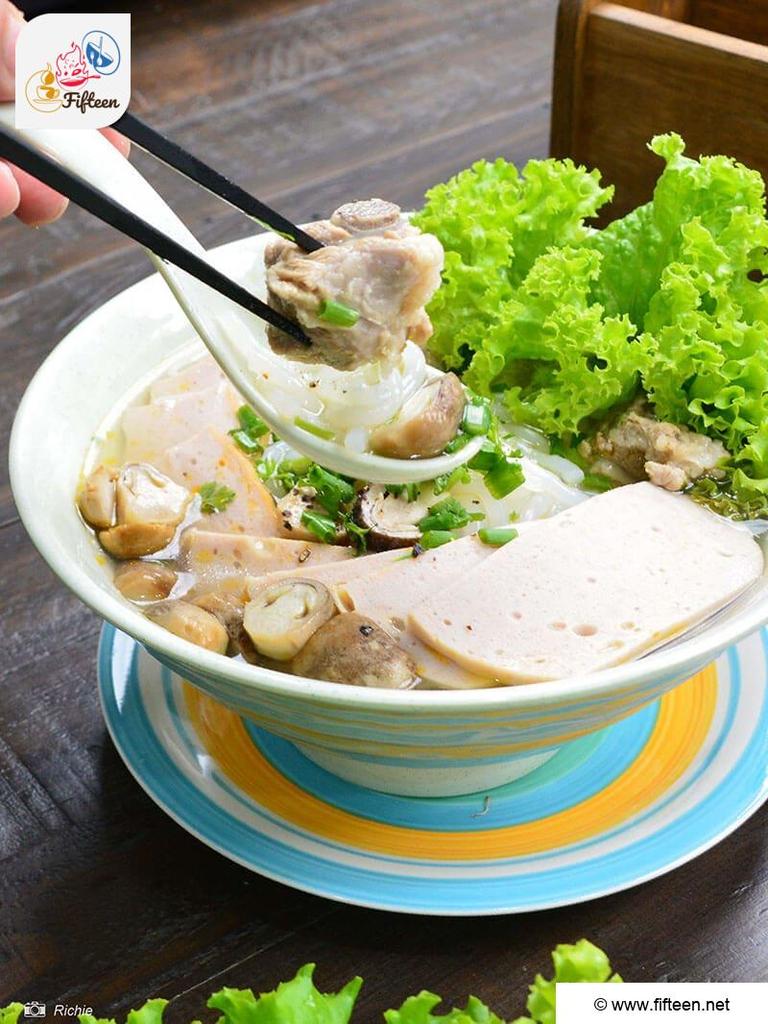
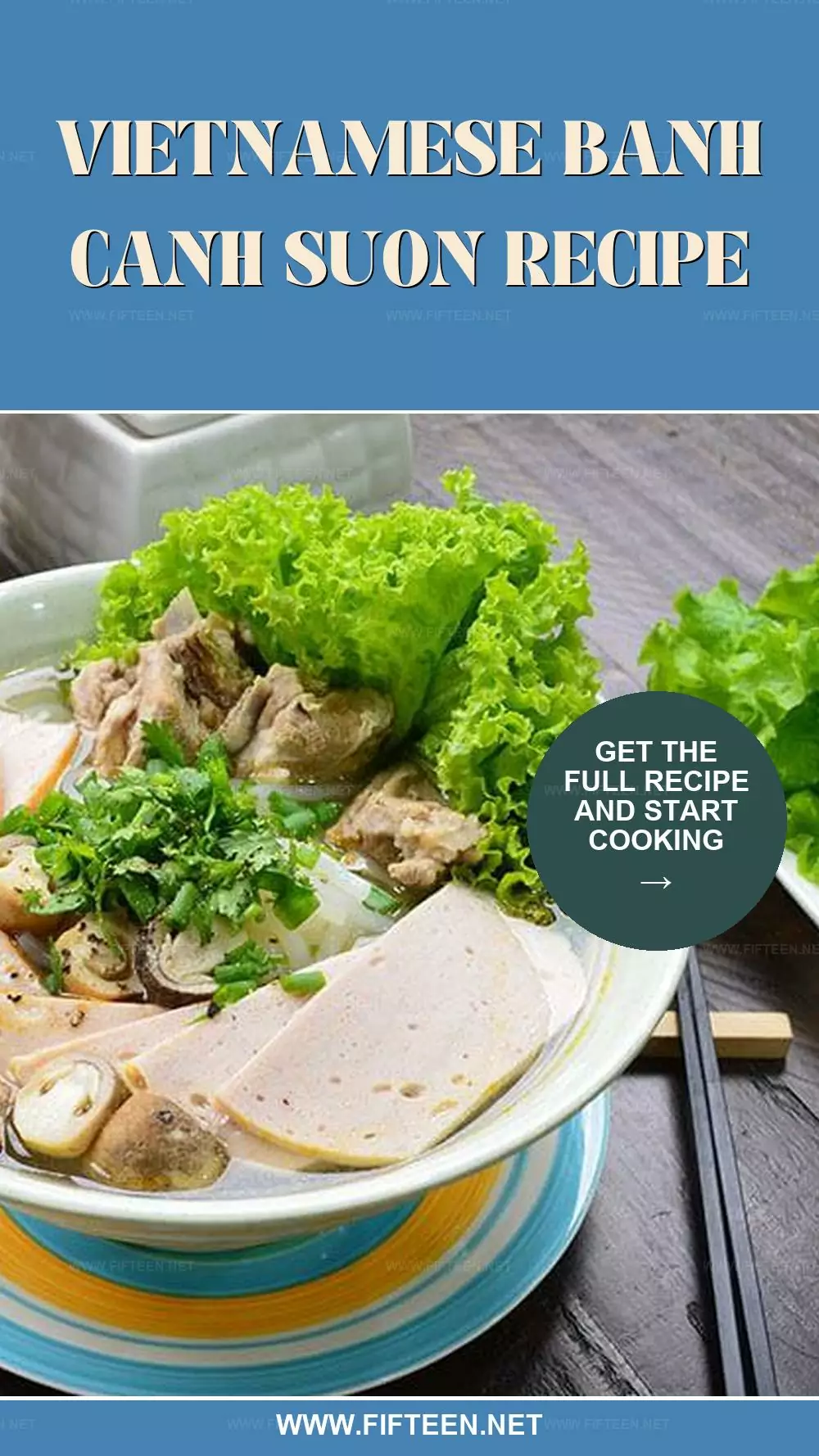
Richie
Content Writer
Expertise
Home Cooking, Meal Planning, Food Styling, Food Photography, Cooking-video Maker, Beverage Evaluation Expert
Education
Saigon Culinary Arts Centre, Ho Chi Minh City, Vietnam
Vietnam Australia Vocational School (VAAC), Hanoi, Vietnam
Richie, based in Ho Chi Minh City, Vietnam, is a dynamic Content Writer with a talent for capturing the essence of culinary art.
Richie specializes in creating visually appealing and tasty content, offering a new angle on Vietnamese and other culinary traditions. With a background in graphic design and a love for food styling and photography, he expertly combines beauty with food narratives, encouraging his audience to discover the culinary world through his imaginative perspective.